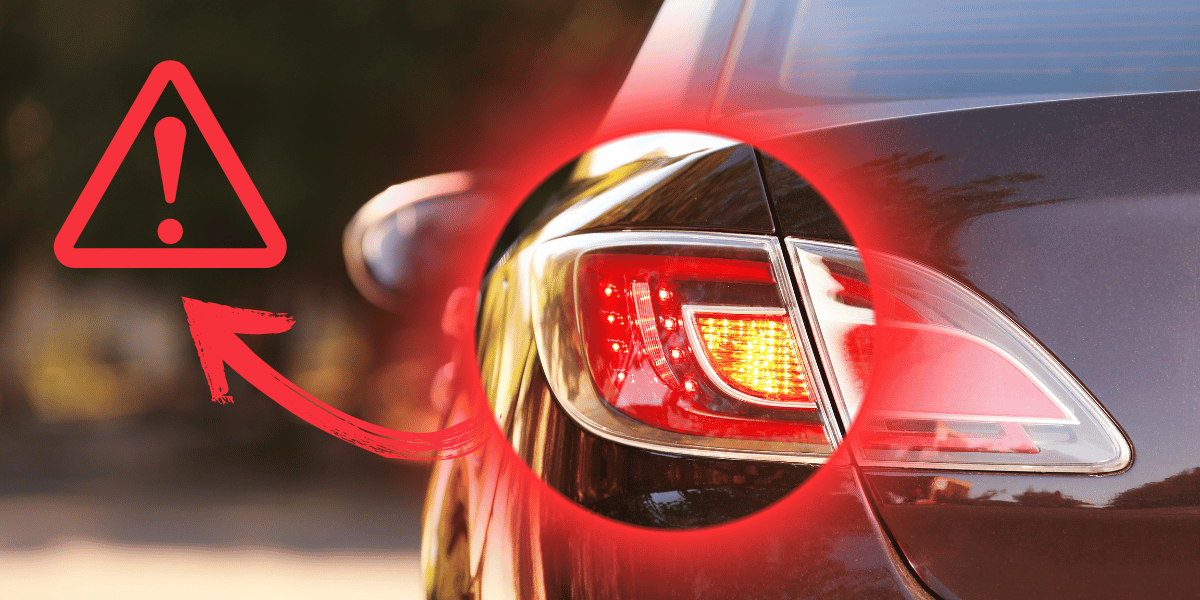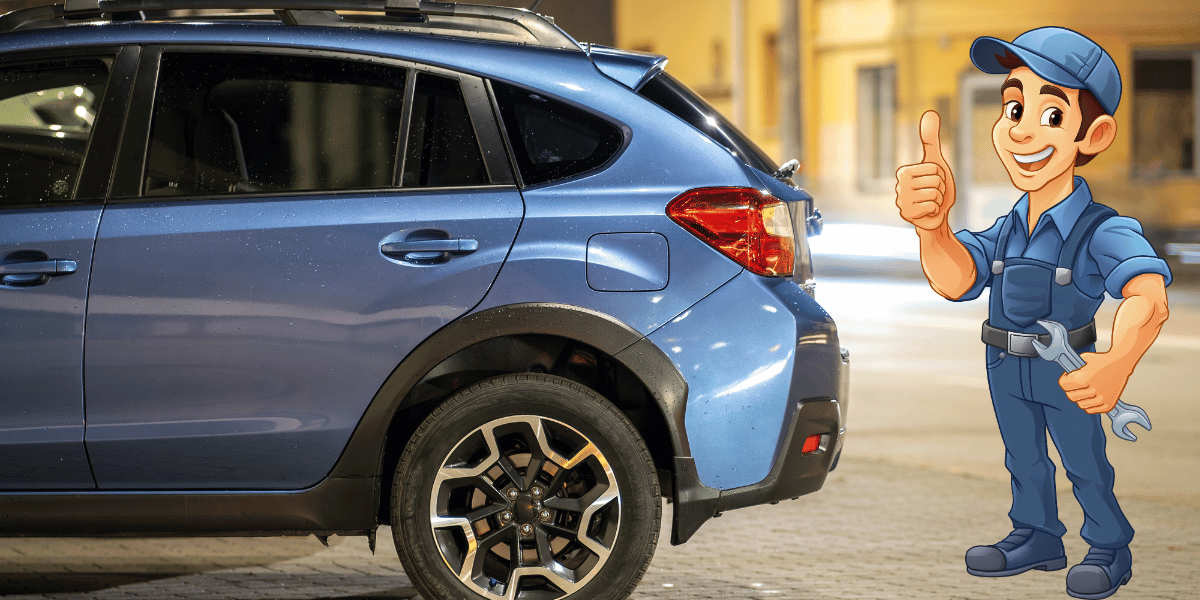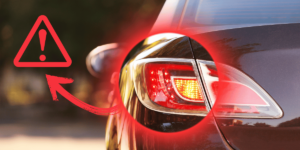Have you ever experienced your car sputtering and stalling the moment you take your foot off the gas pedal? This frustrating issue, known as idle instability, can not only be inconvenient but also pose a safety hazard. Imagine approaching a stop sign and your car suddenly dies, leaving you vulnerable in the middle of traffic.
This guide delves into the various reasons why your car might refuse to idle properly, helping you understand the potential causes and navigate towards solutions. By identifying the culprit behind your stalling woes, you can ensure a smooth and safe driving experience.
Understanding the Problem
Idle Speed
Imagine your car idling at a red light. The engine purrs quietly without any additional input from the gas pedal. This seemingly effortless operation is maintained by a crucial parameter called idle speed. It refers to the engine’s revolutions per minute (RPM) when it’s idling, meaning the clutch is disengaged and the car is stationary.
A healthy idle speed, typically between 600 and 1000 RPM, ensures:
- Smooth operation: Prevents the engine from shuddering or stalling.
- Proper functioning of accessories: Allows components like power steering and air conditioning to operate efficiently.
- Reduced emissions: Maintains optimal engine temperature and minimizes harmful exhaust gases.
When the Rhythm Falters: Basic vs. Complex Malfunctions
Several factors can disrupt this delicate balance, causing your car to stall when you take your foot off the gas. These can be broadly categorized as:
1. Basic Malfunctions:
These are often easier to diagnose and address, typically involving issues related to air intake or fuel delivery. Examples include:
- Clogged air filter: Restricts airflow to the engine, leading to an improper air-fuel mixture and stalling.
- Dirty fuel filter: Limits fuel flow, causing the engine to sputter and eventually stall.
- Vacuum leaks: Unmetered air entering the engine disrupts the air-fuel ratio, leading to unstable idling.
2. Complex Malfunctions:
These involve problems with specific components that control engine functions and require more advanced diagnosis and repair. Examples include:
- Faulty idle air control valve (IAC valve): Malfunctions in this valve disrupt air intake regulation at idle, causing the engine to stall.
- Throttle position sensor (TPS) malfunction: Sends incorrect signals to the engine computer, leading to improper fuel-air mixture control and stalling.
- Faulty fuel pump: Inability to deliver sufficient fuel pressure results in a lean fuel-air mixture and stalling.
Understanding the distinction between these categories can guide you towards appropriate solutions for your specific stalling issue.
Basic Malfunctions and Solutions
When your car struggles to maintain idle speed and stalls when you release the gas pedal, a lack of airflow might be the culprit. Here’s what you need to know:
Symptoms:
- Rough idling: The engine vibrates excessively at idle, indicating an uneven combustion process.
- Hesitation during acceleration: The car hesitates or stumbles when you press the gas pedal, suggesting insufficient air for proper fuel burning.
- Decreased fuel efficiency: Air plays a crucial role in efficient fuel combustion. Restricted airflow can lead to wasted fuel and lower mileage.
Causes:
- Clogged air filter: The air filter traps dust, debris, and other airborne particles. A clogged filter restricts the amount of air reaching the engine, causing the issues mentioned above.
- Dirty throttle body: Over time, the throttle body, which controls airflow into the engine, can accumulate carbon deposits. This buildup can hinder air intake and disrupt idle stability.
- Malfunctioning Mass Air Flow (MAF) sensor (in some models): This sensor measures the air entering the engine. A faulty MAF sensor can send inaccurate signals to the engine computer, leading to improper air-fuel mixture and stalling.
Solutions:
-
Inspect and clean the air filter: Regularly check and replace the air filter according to your car’s maintenance schedule. A clean filter ensures optimal airflow and engine performance. Estimated cost: $10-$20 for a standard filter.
-
Clean the throttle body: Cleaning the throttle body can remove accumulated carbon deposits and improve airflow. However, this process can be delicate and specific to your car model. Consult your manual or seek professional help if unsure. Estimated cost: $50-$100 for professional cleaning.
-
MAF sensor replacement: If the issue persists after cleaning the air filter and throttle body, a faulty MAF sensor might be the cause. Consult a qualified mechanic for diagnosis and potential replacement. Estimated cost: $100-$300 for parts and labor, depending on the car model.
Remember: Addressing these basic malfunctions can often resolve stalling issues caused by inadequate airflow. However, if the problem persists, it’s crucial to consider more complex potential causes and seek professional assistance for proper diagnosis and repair.
Dirty Fuel Filter
A dirty fuel filter can significantly impact your car’s performance and lead to stalling. Let’s understand its role and how to address a clogged filter:
Function:
The fuel filter acts as a barrier, trapping dirt, debris, and rust particles present in the fuel before it reaches the engine’s delicate components. This ensures clean fuel is injected into the cylinders for efficient combustion.
Symptoms:
- Engine hesitation: The engine stumbles or sputters during acceleration, indicating inconsistent fuel delivery.
- Difficulty starting: The car cranks but struggles to turn over due to insufficient fuel reaching the engine.
- Decreased fuel efficiency: A clogged filter restricts fuel flow, forcing the engine to work harder and consume more fuel to maintain power.
Solution:
The most effective solution for a dirty fuel filter is replacement. Regularly changing the fuel filter according to your car’s recommended maintenance schedule (typically every 15,000 to 30,000 miles) is crucial to prevent these issues.
Estimated cost: Replacing the fuel filter is a relatively inexpensive repair, generally ranging from $20-$50 for parts and labor, depending on the car model and location.
Remember: Ignoring a dirty fuel filter can lead to more serious problems like injector clogging and pump failure. Timely replacement ensures smooth engine operation, optimal fuel efficiency, and protects your car’s vital components.
Low Compression Level
Low compression level refers to the reduced pressure created within the engine cylinders during the compression stroke. This pressure is crucial for efficient combustion and proper engine power.
Concept:
Imagine a piston compressing the air-fuel mixture inside a cylinder. The resulting pressure is what pushes the piston down during the power stroke, generating power for the engine.
Symptoms:
- Reduced power: The car feels sluggish and lacks acceleration due to insufficient force generated during combustion.
- Rough idling: The engine vibrates noticeably at idle, indicating an uneven burning process.
- Excessive oil consumption: Worn piston rings, a common cause of low compression, can also lead to oil leaking into the combustion chamber and being burned.
Solution:
Addressing low compression level requires professional diagnosis and repair. Depending on the severity and cause, repairs can range from $500 to $2000 or more. Potential solutions might involve replacing worn piston rings, valves, or even rebuilding the engine in severe cases.
Important Note: Due to the complexity involved, attempting to fix low compression issues yourself is not recommended. Consulting a qualified mechanic is crucial for accurate diagnosis and proper repair to ensure your engine’s health and avoid further damage.
Complex Malfunctions and Solutions
When your car sputters and stalls despite seemingly adequate airflow and clean fuel, a hidden culprit might be lurking within the fuel system: a faulty fuel pump.
Function:
The fuel pump plays a vital role in your car’s operation. It acts as the heart of the fuel system, responsible for delivering fuel under pressure from the tank to the engine’s injectors. This pressurized flow ensures a consistent and adequate supply of fuel for proper combustion.
Symptoms:
- Engine stalling: A failing fuel pump can’t deliver sufficient fuel pressure, leading to a lean fuel-air mixture and stalling, especially under load or when taking your foot off the gas.
- Difficulty starting: The engine might crank but struggle to turn over due to an inadequate fuel supply during startup.
- Reduced power: Insufficient fuel pressure can lead to the engine running rough and lacking power, particularly during acceleration.
Solution:
Unfortunately, a faulty fuel pump often requires replacement by a qualified mechanic. While cleaning the fuel system might be attempted in some cases, it’s usually not a permanent solution. Replacing the pump ensures reliable fuel delivery and restores proper engine performance.
Estimated cost: Replacing a fuel pump can be a more expensive repair, ranging from $300 to $1000 or more for parts and labor, depending on the car model and the complexity of the fuel pump system.
Important Note: Attempting to replace a fuel pump yourself can be risky, especially if dealing with high-pressure fuel systems. It’s crucial to leave this repair to a qualified mechanic who possesses the expertise and tools to handle the job safely and effectively.
Idle Air Control Valve (IAC Valve) Issues
The idle air control valve (IAC valve) plays a crucial role in keeping your engine running smoothly at idle. Let’s explore its function, common issues, and potential solutions.
Function:
Imagine your car idling at a stop sign. The IAC valve acts like a conductor, regulating the amount of air bypassing the closed throttle plate to maintain a constant idle speed. This ensures the engine doesn’t stall when you’re not actively pressing the gas pedal.
Symptoms:
A malfunctioning IAC valve can disrupt this delicate balance, leading to several noticeable symptoms:
- Engine stalling: The engine sputters and dies, particularly when coming to a stop or taking your foot off the gas.
- Erratic idle speed: The engine RPM fluctuates significantly even when idling in neutral.
- Surging acceleration: The engine revs unexpectedly upon releasing the gas pedal, indicating improper air intake control.
Solution:
Addressing IAC valve issues depends on the severity of the problem:
- Cleaning: In some cases, cleaning the IAC valve might resolve the issue. This involves removing the valve and carefully removing any accumulated carbon deposits that might be hindering its operation. However, consult your car’s manual and proceed with caution, as specific cleaning procedures can vary between models.
- Replacement: If cleaning doesn’t solve the problem or the valve is severely damaged, replacement might be necessary. Due to the delicate nature of this component and the potential for improper installation affecting engine performance, seeking professional assistance from a qualified mechanic is highly recommended.
Estimated cost: The cost of addressing IAC valve issues can vary depending on the chosen method. Cleaning the valve yourself might cost around $50 for cleaning supplies. Professional cleaning or replacement can range from $100 to $200 for parts and labor.
Remember: While cleaning the IAC valve might be a tempting DIY option for some, improper cleaning or damage during the process can worsen the problem. Consulting a qualified mechanic.
Throttle Position Sensor (TPS) Malfunction
The throttle position sensor (TPS) plays a critical role in translating your footwork on the gas pedal into precise engine control. Let’s understand its function, how malfunctions can manifest, and potential solutions.
Function:
Imagine pressing the gas pedal. The TPS acts as a translator, converting the pedal’s position into an electrical signal. This signal is sent to the engine computer, which then adjusts various engine parameters like fuel injection and air intake to maintain optimal performance.
Symptoms:
A malfunctioning TPS can disrupt this communication channel, leading to several noticeable symptoms:
- Engine hesitation: The engine stumbles or hesitates during acceleration due to inaccurate signals from the TPS.
- Erratic idle: The engine RPM fluctuates unpredictably even at idle, indicating improper engine control.
- Illuminated check engine light: The car’s computer detects the TPS malfunction and triggers the check engine light to alert you of a potential issue.
Solution:
Addressing a faulty TPS requires professional diagnosis and potential replacement. Due to the intricate nature of the sensor and its impact on engine performance, attempting DIY repairs is not recommended.
Diagnosis: A qualified mechanic will utilize specialized tools to diagnose the TPS and determine if it’s functioning correctly.
Replacement: If the TPS is indeed faulty, replacement with a new sensor is typically necessary. This ensures accurate signal transmission and restores proper engine control.
Estimated cost: Replacing a TPS can vary depending on the car model and labor costs. The estimated cost typically ranges from $100 to $300 for parts and labor.
Important Note: Ignoring a faulty TPS can lead to further problems like increased fuel consumption, reduced engine power, and even potential damage to other engine components. Prompt diagnosis and repair by a qualified mechanic are crucial to maintain optimal engine performance and avoid additional issues.
Additional Tips and Preventative Measures
While addressing the specific causes of stalling can help resolve immediate issues, adopting a proactive approach is key to preventing future problems and maintaining a healthy engine. Here are some essential tips:
Regular Maintenance:
- Follow your car’s recommended maintenance schedule: This includes timely oil changes, spark plug replacements, and air filter cleaning. Regular maintenance ensures optimal engine performance, prevents excessive wear and tear, and reduces the risk of stalling caused by neglected components.
- Inspect and clean components regularly: As mentioned earlier, regularly checking and cleaning the air filter can prevent airflow restrictions that contribute to stalling. Additionally, consulting your car’s manual for specific maintenance procedures like throttle body cleaning (if applicable) can help maintain proper engine function.
Fuel Choice:
- High-quality fuel: While not always necessary, using higher-grade fuel with detergent additives can help prevent buildup of deposits in the fuel system and injectors. These deposits can hinder fuel flow and contribute to stalling issues.
Prompt Attention:
- Don’t ignore stalling: If your car stalls occasionally, don’t wait for the problem to worsen. Address the issue promptly by seeking professional diagnosis and repair. Early intervention can prevent minor problems from escalating into expensive repairs and potential safety hazards.
Additional Recommendations:
- Consult your car’s manual: The owner’s manual is a valuable resource for understanding your specific car’s maintenance schedule, troubleshooting potential issues, and identifying warning signs.
- Seek professional help when needed: While some basic maintenance tasks might be DIY-friendly, complex repairs or situations beyond your expertise should be handled by qualified mechanics. They possess the knowledge, tools, and experience to diagnose and repair problems accurately and efficiently.
By following these tips and maintaining a proactive approach to car care, you can significantly reduce the likelihood of stalling issues and ensure a smoother, safer, and more enjoyable driving experience.
Frequently Asked Questions
Q: What are the most common reasons why a car stalls when I take my foot off the gas?
A: There are several common culprits, including:
- Clogged air filter: Restricts airflow, leading to an improper air-fuel mixture and stalling.
- Dirty fuel filter: Limits fuel flow, causing the engine to sputter and stall.
- Vacuum leaks: Unmetered air entering the engine disrupts the air-fuel ratio, leading to unstable idling.
- Faulty idle air control valve (IAC valve): Malfunctions in this valve disrupt air intake regulation at idle, causing the engine to stall.
- Throttle position sensor (TPS) malfunction: Sends incorrect signals to the engine computer, leading to improper fuel-air mixture control and stalling.
Q: Can I fix a stalling car myself?
A: It depends on the cause of the problem. Some basic issues like replacing a clogged air filter or cleaning the throttle body (with proper guidance) might be DIY-friendly. However, complex malfunctions involving components like the IAC valve or TPS typically require professional diagnosis and repair by a qualified mechanic.
Q: What should I do if my car stalls while driving?
A: If your car stalls while driving, remain calm and try to safely maneuver it to the side of the road. Turn on your hazard lights and avoid stopping in the middle of traffic. Once in a safe location, attempt to restart the engine. If it doesn’t start, call for roadside assistance or tow truck assistance.
Q: How can I prevent my car from stalling?
A: Regular maintenance is crucial. Follow your car’s recommended maintenance schedule, which includes timely oil changes, air filter replacements, and spark plug inspections. Additionally, using high-quality fuel and addressing any warning signs promptly can help prevent stalling issues.
Q: What are some warning signs that my car might be prone to stalling?
A: Rough idling, hesitation during acceleration, and decreased fuel efficiency can be indicators of potential problems that could lead to stalling. Addressing these issues promptly can help prevent further complications.
Q: Car dies when let off gas, car sputters when letting off gas why?
A: These symptoms often point towards similar issues like clogged air filter, dirty fuel filter, or vacuum leaks. They disrupt the air-fuel mixture, causing the engine to run improperly and stall when you take your foot off the gas.
Q: What Is idle air control valve symptoms?
A: A faulty IAC valve can cause rough idling, stalling, and engine hesitation. These occur due to the valve’s inability to regulate air intake properly at idle, leading to an imbalanced air-fuel mixture.
Q: Why car starts then sputters and shuts off, car only starts when putting gas in throttle body?
A: These issues could indicate problems with the fuel system, such as a faulty fuel pump or clogged fuel injectors. They can prevent the engine from receiving sufficient fuel, leading to stalling and difficulty starting. In rare cases, a faulty throttle position sensor (TPS) might also mimic these symptoms.
Q: Car stalls when idle or slowing down, car stalls when pressing gas but why?
A: These broader stalling concerns can have various causes, including the issues mentioned above (air intake, fuel system, IAC valve, TPS). Additionally, problems with spark plugs, ignition coils, or even sensors related to engine temperature or crankshaft position can contribute to stalling under different conditions.
Q: Why engine hesitation on acceleration, rough idle car?
A: These symptoms often indicate problems with the ignition system (faulty spark plugs or coils) or issues related to air intake (clogged air filter) or fuel delivery (dirty fuel filter). They can cause the engine to run inconsistently, leading to hesitation and rough idling.
Q: How to clean throttle body, symptoms of bad fuel filter, vacuum leak symptoms car?
A: While cleaning a throttle body might be attempted as a DIY solution in some cases (refer to specific car instructions), it’s crucial to approach with caution and avoid damaging components. Replacing a clogged fuel filter and diagnosing vacuum leaks are generally recommended for qualified mechanics due to the potential complexity involved.
Take Away:
Experiencing car stalling when you take your foot off the gas can be frustrating and inconvenient. While several potential causes exist, some common culprits include clogged air filters, dirty fuel filters, vacuum leaks, and malfunctioning components like the idle air control valve or throttle position sensor.
While some basic issues might be DIY-fixable, complex problems often require professional diagnosis and repair. Regularly maintaining your car, using high-quality fuel, and addressing warning signs promptly can help prevent stalling issues and ensure a smooth driving experience.
If you encounter stalling, remember to stay calm, pull over safely, and seek assistance if needed. Consulting a qualified mechanic for accurate diagnosis and repair is always recommended. If you have any question comment below in comment section. Thank you for reading.








